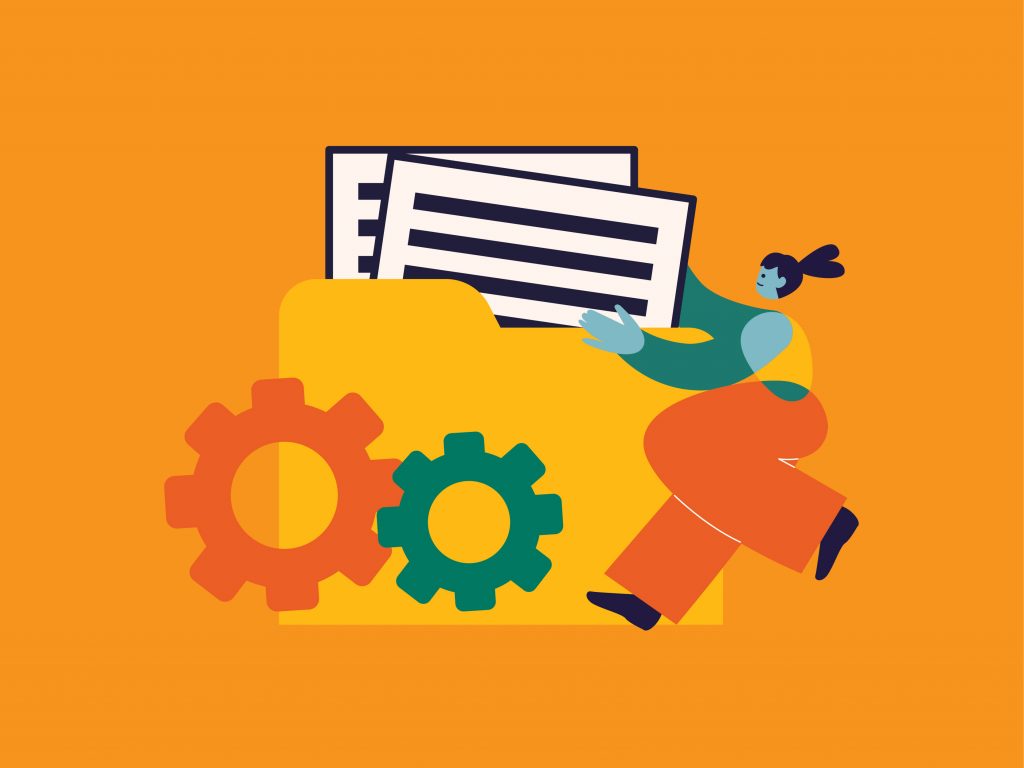Have you ever tried to make animation for online courses? The animation is not something that is “nice to have”, but can lead to better experiences in online learning. It could help you gain better student satisfaction, completion rates, and more. However, producing educational animations is a lot of work. If you have never done it before and you have no idea where to start, this article will give you a step-by-step guide on how to make animated educational videos for online learning properly.
Step 1: Brief
Your first step in producing an educational animation is brief. This step gives you an overall direction of your objectives, your audience, and your animation style.
- Objectives:
Identify the overall directions of your courses. What do you want to put in your course? How do you expect them to become? Make sure to choose the right content. Don’t just throw everything at the learners. You should highlight the key factors of the lessons to help them understand better. - Audience:
The insight of your online learners. What is their expectation of your course? How do they like it to become? Kids are more interested in funny animated learning videos with vibrant colors and catchy sounds. However, corporate employees may prefer more formal, short, and sharp teaching materials. Researching their insight may take 5-7 days, take your time. - Animation types:
There are various types for you to choose from. The most common ones are motion graphics, whiteboard animation, and hand-drawn animation. Every kind of animated learning video has its own drawbacks and advantages. For example, the motion graphics are slightly more formal while the white-board animation is simpler with quite an affordable price. It all depends on the learners’ tastes as well as your own. The animation type plays an important role in deciding your style frame. The style frame is formed based on your branding guidelines and your preferred animation type.
You may want to read more about:
- How To Write Learning Objectives For Online Courses Effectively
- 5 Tools for a Successful Animation Project Management
If you are working with an animation production partner, then make sure to provide them with a brief with at least 3 above elements. They need information about the learning objectives, your audiences, and your preferred animation style to deliver insightful videos.
Step 2: Script and Styles
You don’t need a professional scriptwriter to express your ideas. Imagine everything in your mind including the characters, the background, the color, and the movement also. Then write it all down! The more detailed the better. You could break the script into different scenes. Then set the timeline, voice-over, and texts for each. Make sure you add humorous factors into the script. Learning should be fun! These small additions to the courses could make big differences in the learning outcomes.
Scriptwriting is not that hard to work. Sometimes the animated educational videos just simply represent a fact or a process to explain complicated ideas. This type of animation acts as a visual-supporting tool for your learning material.
For example, you are doing a video-based online course with a talking-head video. There are difficult concepts that the lecturers could not explain in words, then we can use animated videos to help the instructors. Writing a script for this video type is so not stressful. In fact, you can generate a script from the lecturer’s lesson plan or voiceover. Take a look at our Permaculture case study.
Recommended reading:
- How to Write Animation Script for Video-based Courses
- Secret keys to write an awesome animation script
Step 3: Voice-over
It is not necessary to have voice-over if you choose to include more text in the animated learning videos. However, the voice-over is a wise choice. It enhances the presence of lecturers and deepens their connection with the learners. Moreover, it is always better to reduce the text and help learners consume the information with visuals and sounds.
Should you hire a professional voice actor?
Maybe.
Unless it is a story with different characters, you should include your own voice. Using your voice enhances your relationship with online students and makes them feel less isolated. In addition, this saves you some money also.
Find out how you can do it yourself:
Step 4: Storyboard
A storyboard is an essential part of animation production. It saves you time and money. Why? The storyboard gives you an overall look at how your animated educational video would look like. With live-action videos, we can reshoot footage if something goes wrong. This is not the case for animations. If you realize you want to present the video from another angle, then we have to redo everything.
Read more:
4 Steps to Create Animation Storyboard for Educational Purposes
Combine the script and the style frame, then you have a storyboard. The storyboard is just like the script with visuals. It represents the animated learning video in much more detail. It shows the story progression frame-to-frame with the concept art. It all depends on your story but a minute of educational animation should contain 6-10 frames. When you finish the storyboard, make sure to check if it is appropriate to your expectations in the brief.
When you finish the storyboard, make sure to check if it is appropriate to your expectations in the brief.
Step 5: Illustration
If you are satisfied with the storyboard, now it is time to move on to illustration. This step brings you further to the details. Imagine filling the storyboard with more images representing every character, items in the background, and movement. This is sure a lot of work. Whatever type of animation you choose, you should have everything in digital form to prepare for the animating step. Illustrate them with tools or scan and edit all of the work you draw by hand.
Is this step hard? Not really. However, if you don’t have any background in designing or illustrating, you should consider a professional illustrator to do the work properly.
Step 6: Animation
Now all left is add movement to your work. Depending on your expectations and type of animation, the movement should be smooth or slightly rough like in stop-motion videos. Then add a final touch with sounds and effects.
Make your online and hybrid course more engaging with simple animation guide, why not?
Ultimate Guide to Make Animated Educational Videos

That’s how to make animated videos for your online learning courses.
Is this overwhelming for you? Most of you must be confused from step 4, especially you with no background in designing or animating. Then there are 2 options for you:
- Choose pre-designed tools: There are various tools for you to choose like PowToon or GoAnimate. If you ever google for animating tools you must have seen them. They help people with no animation background with templated illustration and animation. You could produce nice animated learning videos at an affordable price with those tools. However, since everything is templated, there is no sense of uniqueness. In fact, most could realize if a video is made by pre-designed tools at first glance. Those tools are great for those who want to test animations. However, it is not for the long run.
- Contact an animation studio (yes, like F.Learning Studio): Leave all the work to professionals. They could consult you on how to make the ideas work. Then they help you do everything from briefing to delivery with high-quality and totally unique animations. The videos are made for you only, it could be a great move for branding also. This reduces a lot of work and guarantees the quality.
Read Further:
- [INFOGRAPHIC] How to combine animated with self-recorded videos in your courses?
- How NOT to make educational animation a distraction in eLearning
Conclusion
We hope that with all the detailed guides below, now you can make animation for online courses by yourself, and enjoy the process as well. But if making an animated educational video is still too complex, the best way is to let F. Learning Studio carry this burden for you. Contact us and all you need to do is to enjoy the high-quality animation.
- WhatsApp: (+84) 378 713 132
- Email: [email protected]
- Fanpage: https://www.facebook.com/f.learningstudio
- LinkedIn: https://www.linkedin.com/company/f-learning-studio/

Sean Bui, the founder and creative director of F.Learning Studio, is a respected leader in the e-learning and multimedia production industry. With over 10 years of experience, he has dedicated his career to helping organizations create engaging and impactful learning experiences.
Under his leadership, F.Learning Studio has grown into a trusted partner for organizations in the education, healthcare, and corporate training sectors, producing over 2,000 minutes of educational animation.






![Best 10 Educational Animation Software [Update 2025] 6 Analyzing the needs and the goal of the project is important](https://flearningstudio.com/wp-content/uploads/2021/06/Top-anim-tools-01-420x370.png)